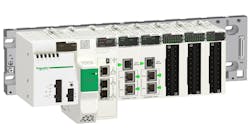Related
Related
Sponsored Content
The major drivers for growth in this market include the advance and rapid growth in automation, adoption of energy-efficient international standards, ease of use, adding motion-control components to motors and drives, and energy efficiency regulations.
The automotive and transportation industry is expected to hold the largest market share in numbers and value in servo motors and drives through 2022 due to rapid changes in manufacturing technology, innovation, and technical advancement. There is also a high demand for servo drives, controllers, and motors across the globe, as they help companies improve the efficiency of production and manufacturing. But the packaging industry segment’s use of servo motors and drives is expected to grow the fastest during that period.
Looking inside the drives and servo motors market, the segment for linear servo motors is expected to have the highest growth rate through 2022 based on growing applications in semiconductors & electronics, manufacturing machines, machine tools, food processing, packaging machines, textile machines, robotics, chip mounters, and other automation industries. The market for medium-voltage servo motors and drives is also expected to grow faster than most other segments due to the growing demand for them in industries such as metal, mining, power generation, and water and wastewater treatment.
Form a geographical perspective, the Asia and Pacific (APAC) region will sell the largest share of servo motors and drives, followed by Europe, and then the Americas. The APAC will hold the major share of the mainly because growth is increasing industrial activity along with the demand for faster and accurate motors and drives for higher production rates. Large investments in manufacturing are also driving the growth of servo motors and drives in the region.
The major challenges for the companies in the market are risk and uncertainty and lack of a skilled work force and trained workers. Major vendors in the market include Yaskawa Electric Corp. (Japan), Mitsubishi Electric Corp. (Japan), Siemens AG (Germany), Schneider Electric (France), and Rockwell Automation Inc. (U.S.). All of these firms have adopted various strategies such as new product developments, mergers, partnerships, collaborations, and business expansion to cater to the needs of their servo motor and drive customers.
This article was originally published in Machine Design. Machine Design is also powered by Penton.



